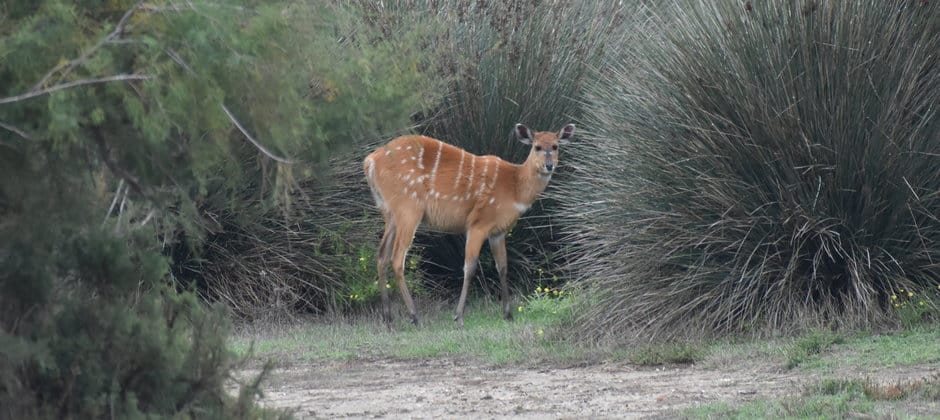Share this article
Healthy ecosystems deter disease transmission
Deadly diseases like COVID-19 are less likely to jump from wildlife to humans if healthy, intact ecosystems are conserved, according to a report and a separate study released recently.
“A very large part of the risk from emerging infectious disease comes from various forms of interaction between wildlife and humans,” said Tom Evans, the global lead on forest conservation and climate change with the Wildlife Conservation Society and one of the co-authors of the new report. “There is a significant body of evidence that show that these high levels of degradation to natural systems are driving high levels of risk of disease emergence.”
The WCS report links the spread of zoonotic diseases to ecosystem health. On the broadest scale, Evans said, researchers found high levels of ecosystem modification around the world, particularly in tropical regions, including overhunting, altering natural fire regimes and expanding human development. Once ecological balances have been upset, researchers say, they can lead to higher disease prevalence among wildlife and a greater chance of disease spreading to humans.
“There are a whole bunch of interfaces, and we know that there’s a very high diversity of infectious diseases and pathogens in wildlife species,” Evans said.
Mark Everard, an associate professor of ecosystem services at the University of the West of England and the lead author of a study published recently in Environmental Science and Policy the natural functions of ecosystems in regulating animal-to-human transmission of pathogens like COVID-19, citing prior research that found 65% of recent zoonotic diseases come uniquely from wild animals, while 91% come from a combination of wild and domestic animals.
Evans said things like penetration roads, which are built to connect to dams or other development in otherwise wild areas, can also give poachers access to animals that wouldn’t normally be accessible. Transmission can occur when these animals are brought into human areas in the form of bushmeat.
Habitat destruction doesn’t uniformly affect all wildlife. Some species thrive when humans alter the landscape, but that can be a problem, too, Everard said, if it means that a higher proportion of disease-carrying species prosper in disturbed ecosystems, and particularly when they into human areas.
“A thousand rats eating from a dustbin isn’t a balanced ecosystem,” Everard said.
Contacts between wildlife and humans that lead to disease transmission “are still rare events,” Evans said, “but it’s a numbers game. The more of these risky contacts that you enable, the more a risk of these really dangerous spillovers.”
Fortifying ecosystems to reduce the emergence of disease is an ongoing focus of the One Health approach to mitigate diseases, an approach that brings together wildlife veterinarians and biologists with medical doctors and others to tackle pathogens.
“Avoiding disruption of tropical ecosystems would be the best place to start,” Evans said. “Arguably, we know what to do. The point is making it work.”
Everard said that zoonotic disease mitigation is another reason for richer countries to continue to provide aid money to developing countries, particularly since fortifying working ecosystems in places like the Congo can help decrease the emergence of pathogens and the persistence of disease reservoirs that, like COVID-19, can return to affect the richer countries. In other words, rich countries can help themselves stay healthy by helping developing countries.
“There is a distinct self-interest not to cut down on international aid,” he said. But fortifying ecosystems is also important in richer countries, and can be accomplished through things like sustainable agriculture as opposed to monoculture industrial farming.
“The way we manage ecosystems is a risk factor,” Evans said.
Header Image: Sitatunga (Tragelaphus spekii) antelopes are often sold as bushmeat. Bushmeat consumption can increase the risk of zoonotic disease transmission. Credit: Tylwyth Eldar








